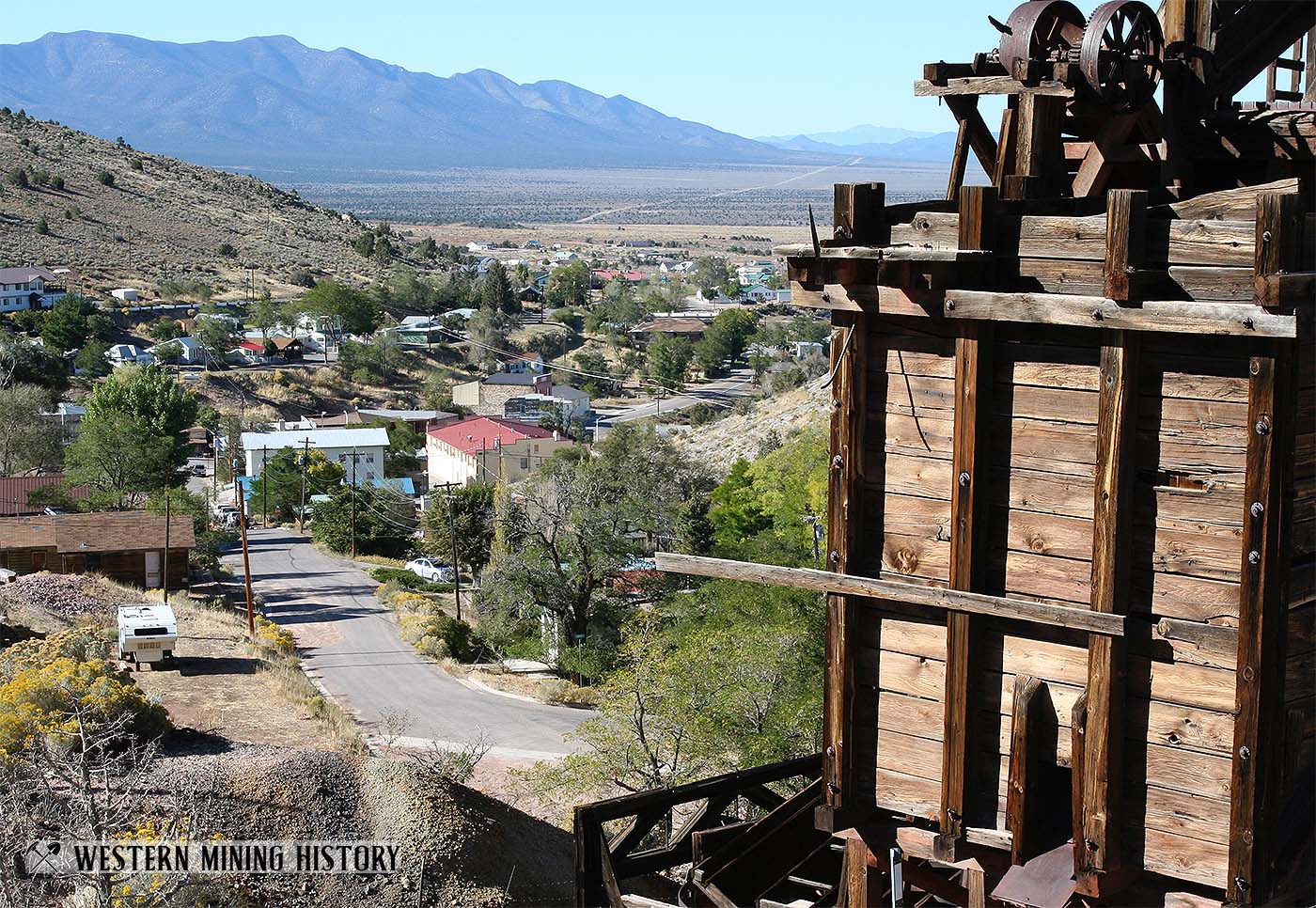Pioche History
A historical marker at Pioche sums up the history of the area:
Silver ore was discovered in this range of mountains in 1864, but no important development took place until 1869 when mines were opened and the town of Pioche appeared. Pioche soon became the scene of a wild rush of prospectors and fortune seekers and gained a reputation in the 1870's for tough gunmen and bitter lawsuits. Over five million dollars in ore was taken out by 1872, and by 1900 Pioche was nearly a ghost town.
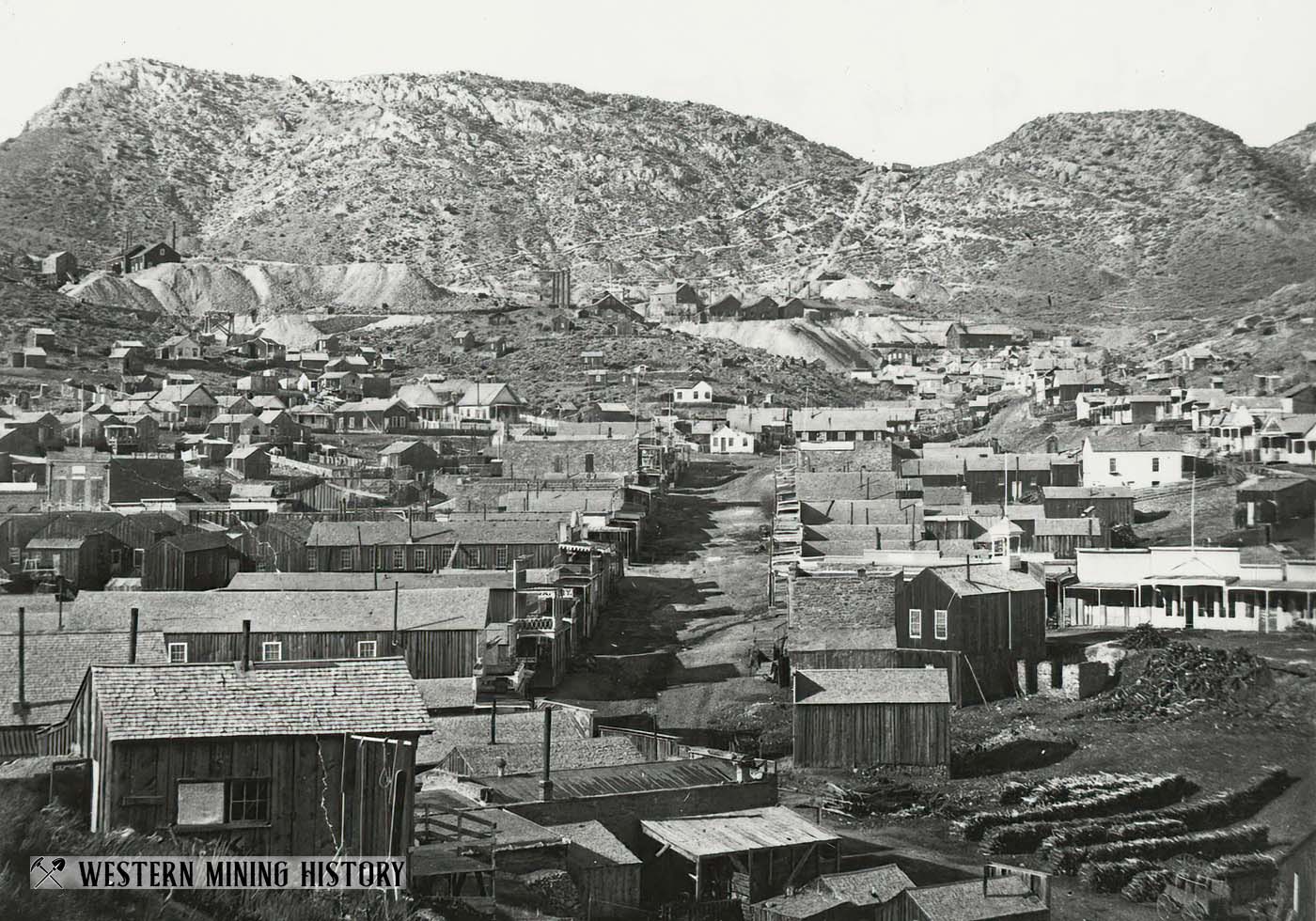
Designated as the seat of Lincoln County in 1871, Pioche survived hard times as a supply and government center for a vast area. In later years, notably during World War II, profitable lead-zinc deposits were developed.
Early History
The first discovery in the area was made in the winter of 1863-1864, allegedly by a Mormon missionary that was led to an outcrop of silver by Paiute Indians in exchange for food and clothing,
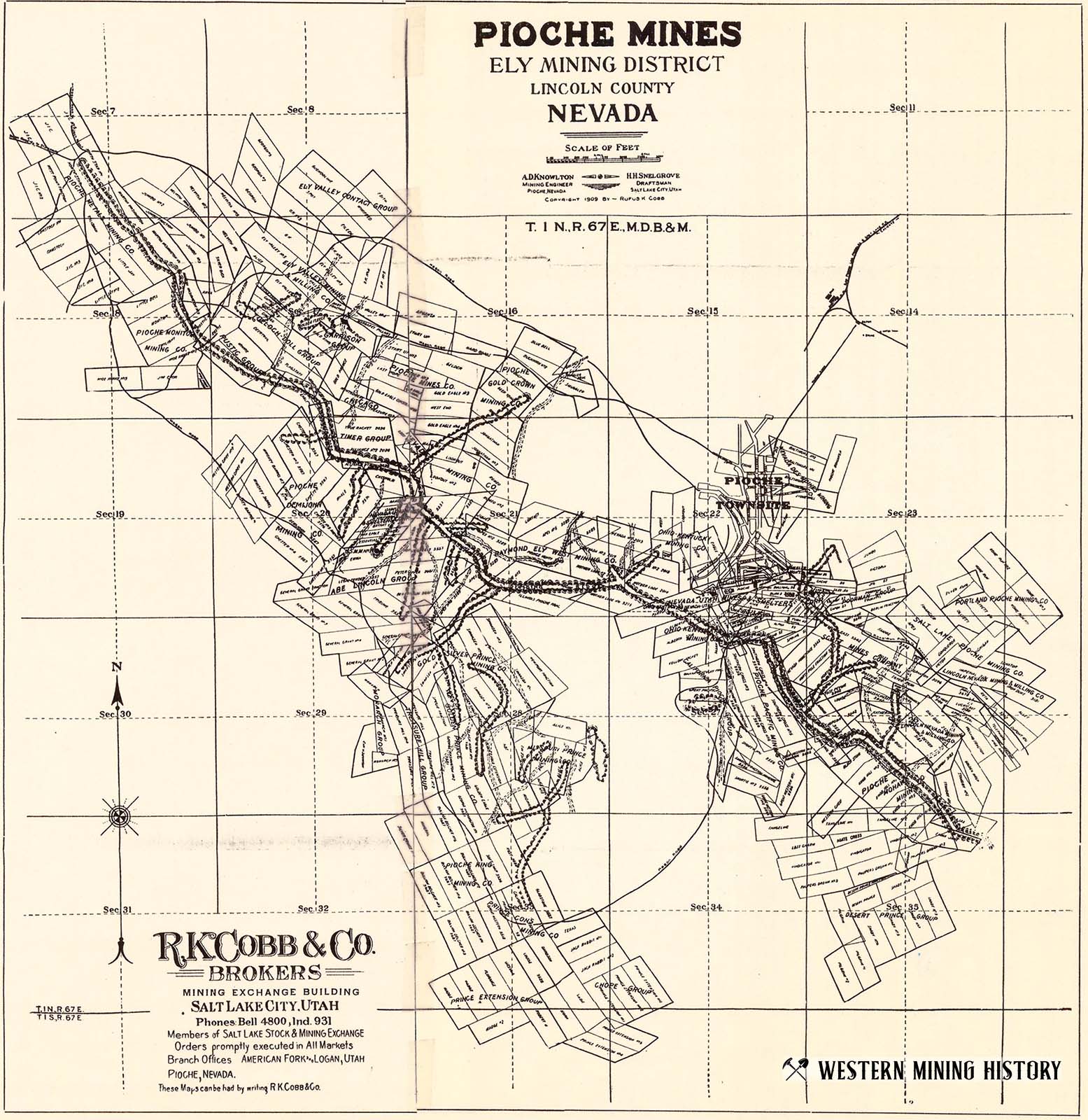
In 1864 a mining district was organized–what the original district name was something I could not ascertain. In 1868 the district was renamed to Ely (not to be confused with Ely in White Pine County). Although both historical district maps and newspaper articles confirm the name Ely district, modern sources tend to refer to it as the Pioche district.
This naming confusion seems to have thrown researchers off the scent of the historical photos of Pioche taken in 1871 by Timothy H. O’Sullivan that are labeled as being from the Ely district but I have never seen them identified as being from Pioche.
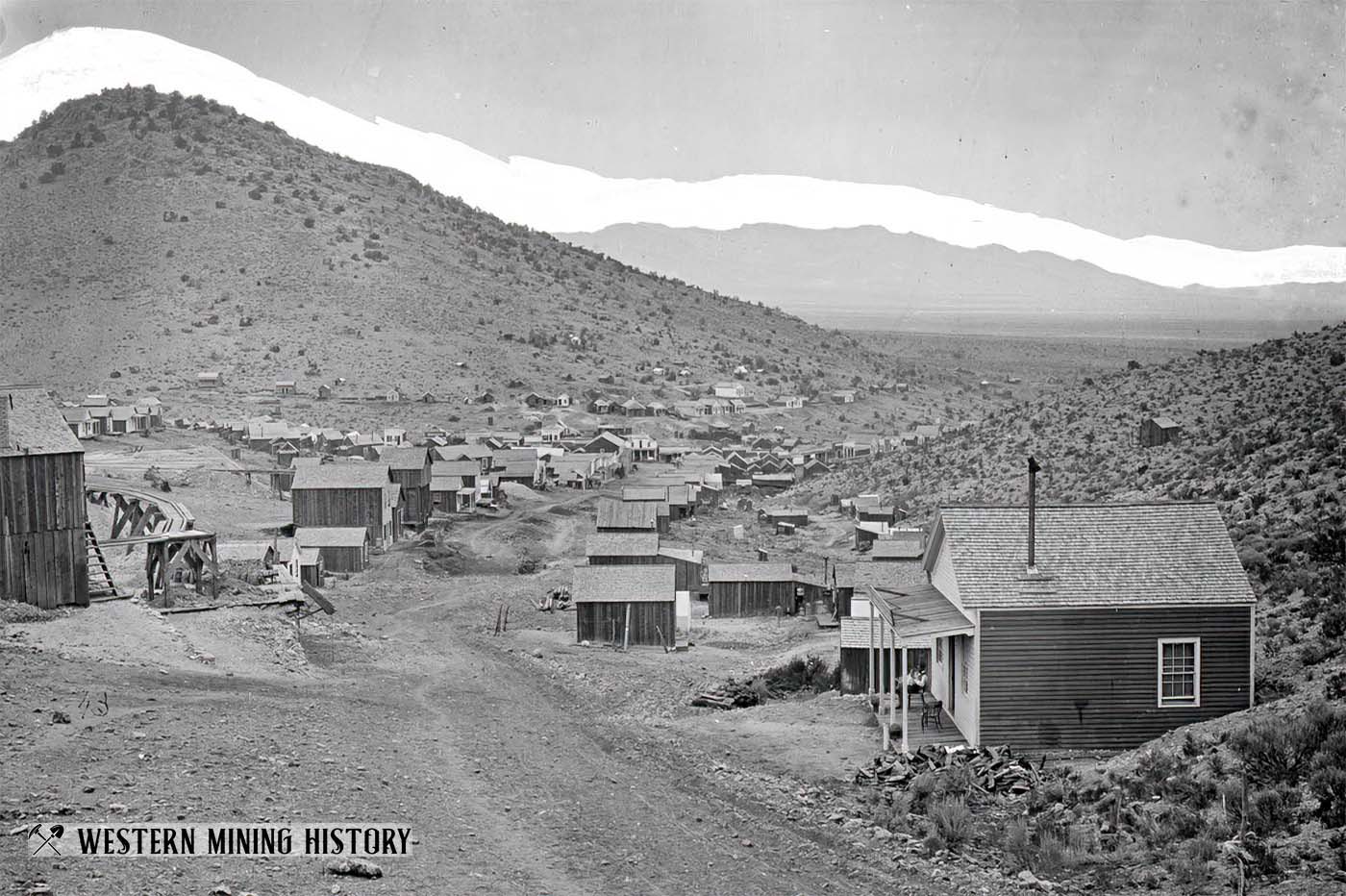
The rich silver ore here spurred the rapid rise of the town of Pioche–it became the most important settlement in all of Southern Nevada, possibly in the entire state outside of the Comstock area in the early 1870s.
The town was named after François Louis Alfred Pioche, an investor from San Francisco that purchased several claims in the district and built the first smelter in 1868. A post office was established in 1870. In 1871, the county seat of government was moved from Hiko to Pioche.
The county courthouse, built in 1871, became known as the “Million Dollar Courthouse”. The original cost of the building was to be less than $30,000, but the project suffered from “extravagant spending” that resulted in a $75,000 price tag. The cost overruns were financed and refinanced for decades to cover compound interest charges until around $800,000 was spent on the building when the debt was finally settled in 1938–the same year it was abandoned in favor of a newer building in town.
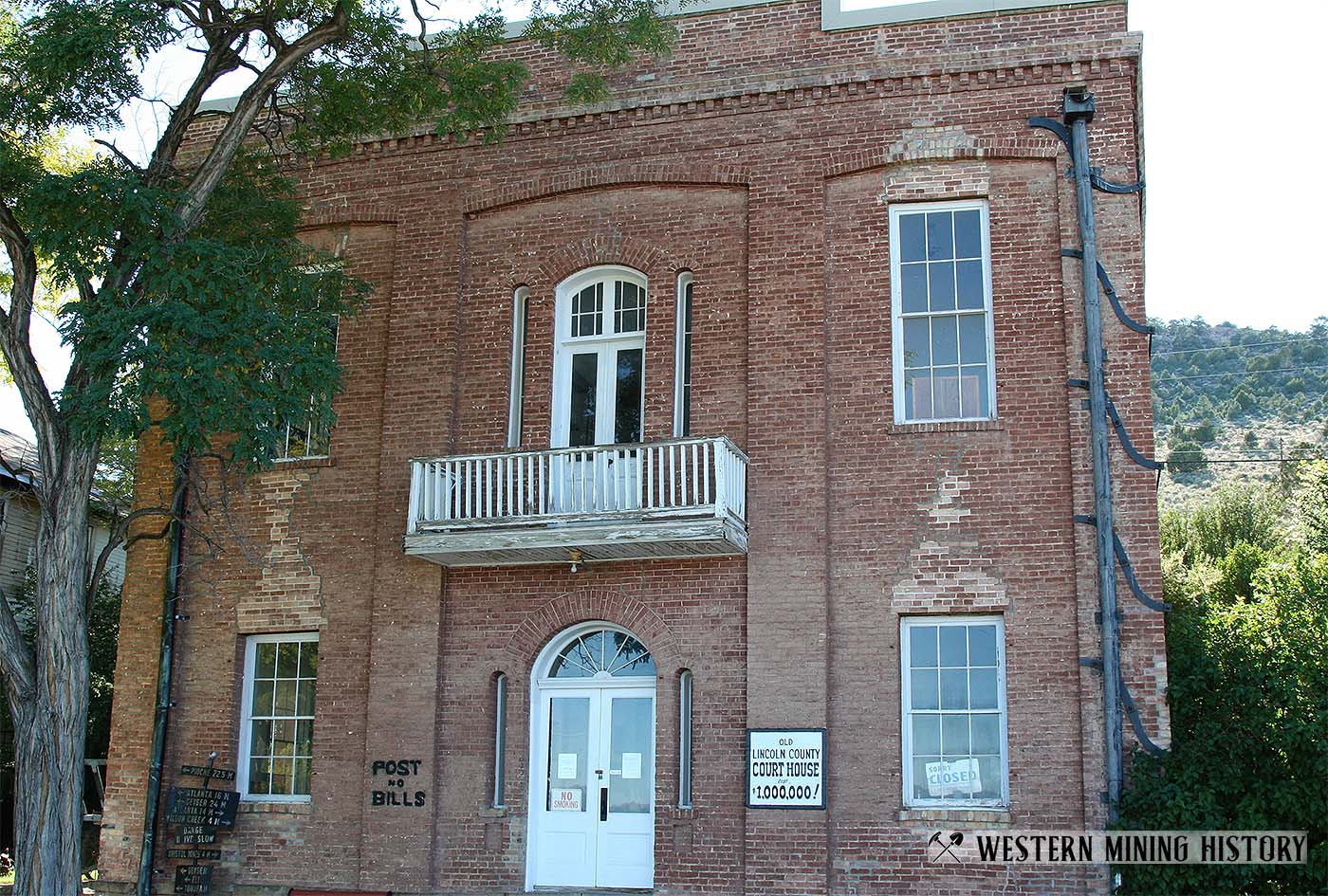
Pioche was one of the most remote towns in the West, with the closest railroad station 275 miles to the north at Palisade. Despite the extreme distance, capital began pouring into the district by 1870 and freight wagons by the hundreds hauled mining machinery and goods for the town over extremely long and primitive wagon road from Palisade. The fact that the difficulty and expense to build out the mines here at this early date demonstrates how rich the Ely district mines were.
The speed at which Pioche developed, combined with its remote location, resulted in a boom town that existed largely outside of the rule of law in its early years. The 1970 publication Ghost Towns & Mining Camps by Stanley Paher claims that in 1871 and 1872, around sixty percent of murders in the entire state occurred in the Pioche area. The book has one particularly interesting passage regarding the lawlessness in the town:
Murderers often gunned down or without provocation stabbed innocent men and openly boasted of their crimes. If one of them were arrested, he was released on “Straw bail” or on a technicality. Professional gunmen stalked the streets, and the wealthy hired their own protection. Hired guns of the two large mining companies often turned the Treasure Hill mining area into a virtual battleground.
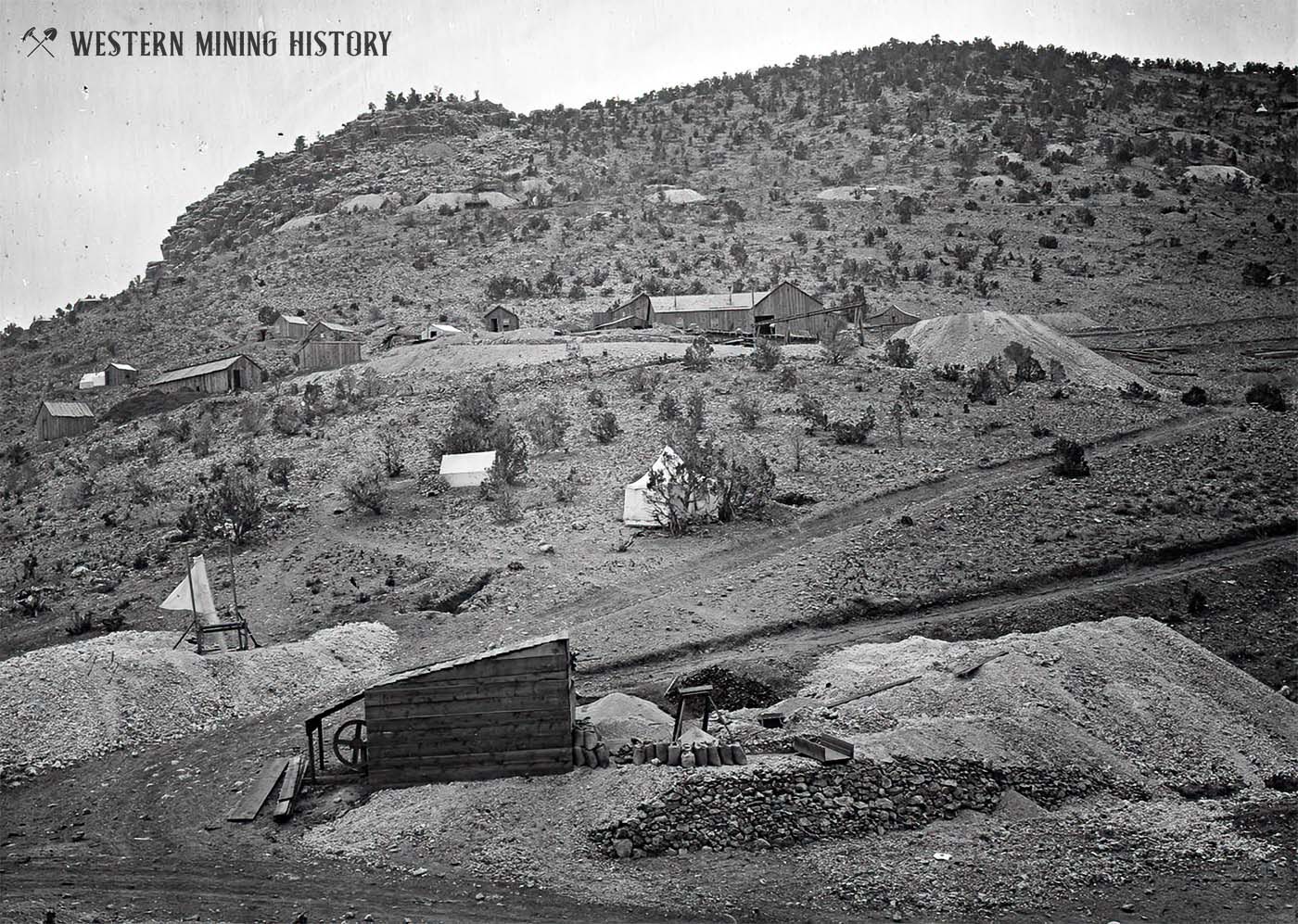
By 1871 the town had around 7,000 residents, dozens of saloons, and a thriving red light district. The dramatic rise of the town was cut short on September 15, 1871 however, as an explosion and fire destroyed much of the town. The incident was described by the Gold Hill Daily News:
Pioche City was almost entirely destroyed by fire on the night of the 15th. The Record publishes the following: Last night, between 11 and 12, a destructive fire broke out in the rear of Lagrue's restaurant, which destroyed nearly all of Pioche. Loss between $200,000 and $300,000, on which there is scarcely a dollar of insurance.
The fire was as nothing compared to the loss in killed and wounded. Felsonthall & Co. had 300 kegs of Dupont's powder in what was supposed to have been a fireproof cellar, and about 3 o'clock the whole mass exploded, killing six and wounding thirty-one persons. Several lesser magazines In the rear of the store exploded later.
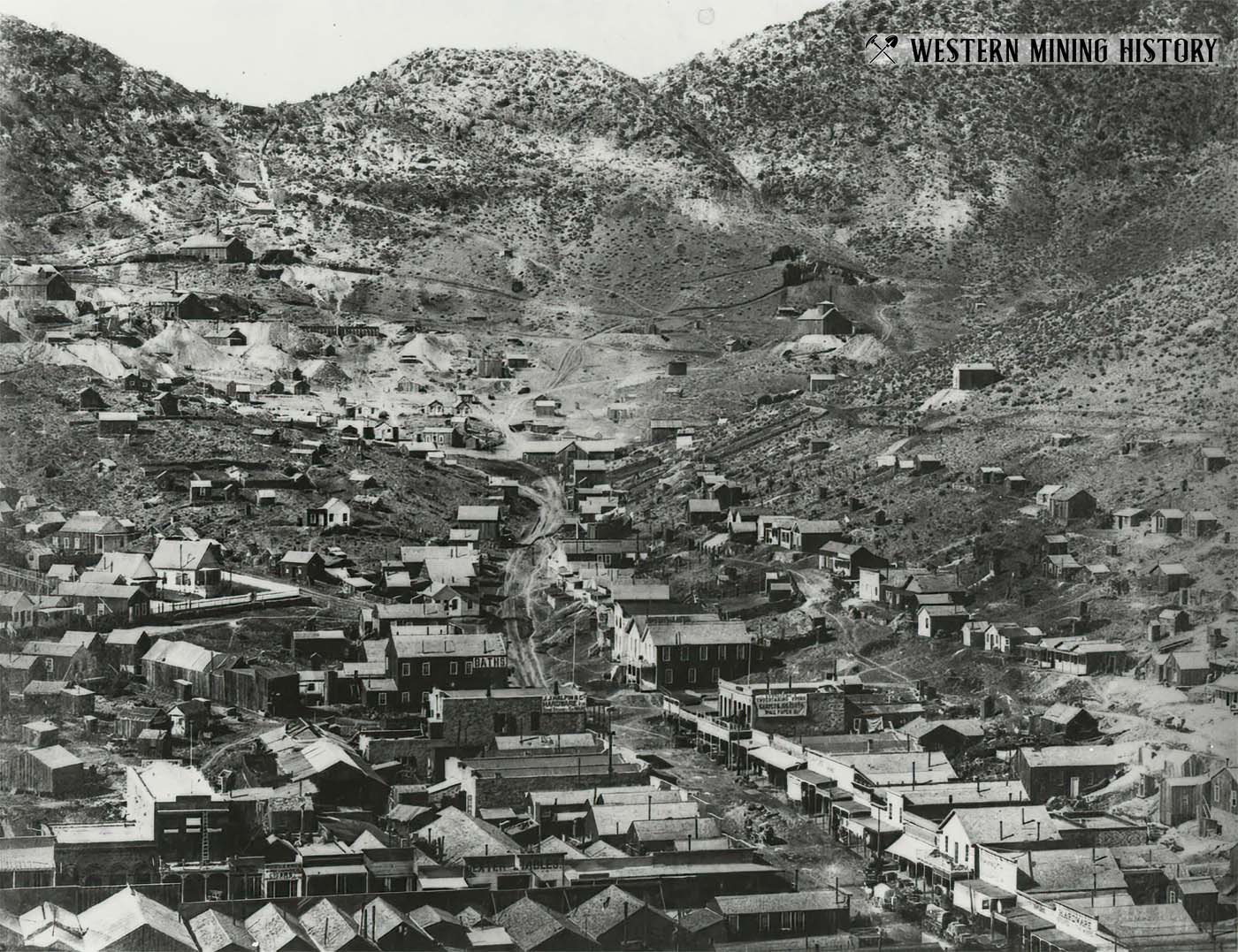
It is impossible to describe the terror and consternation which prevailed during and after the explosion. Men, women and children rushed about in all directions, seeking lost relatives and friends. By the explosion houses were thrown down and shattered, and the cries of the wounded and dying were pitiful in the extreme.
Although the fire left nearly 2,000 people homeless, the town quickly rebuilt. Nothing keeps a mining boom town down for long when mines are producing large quantities of rich ore.
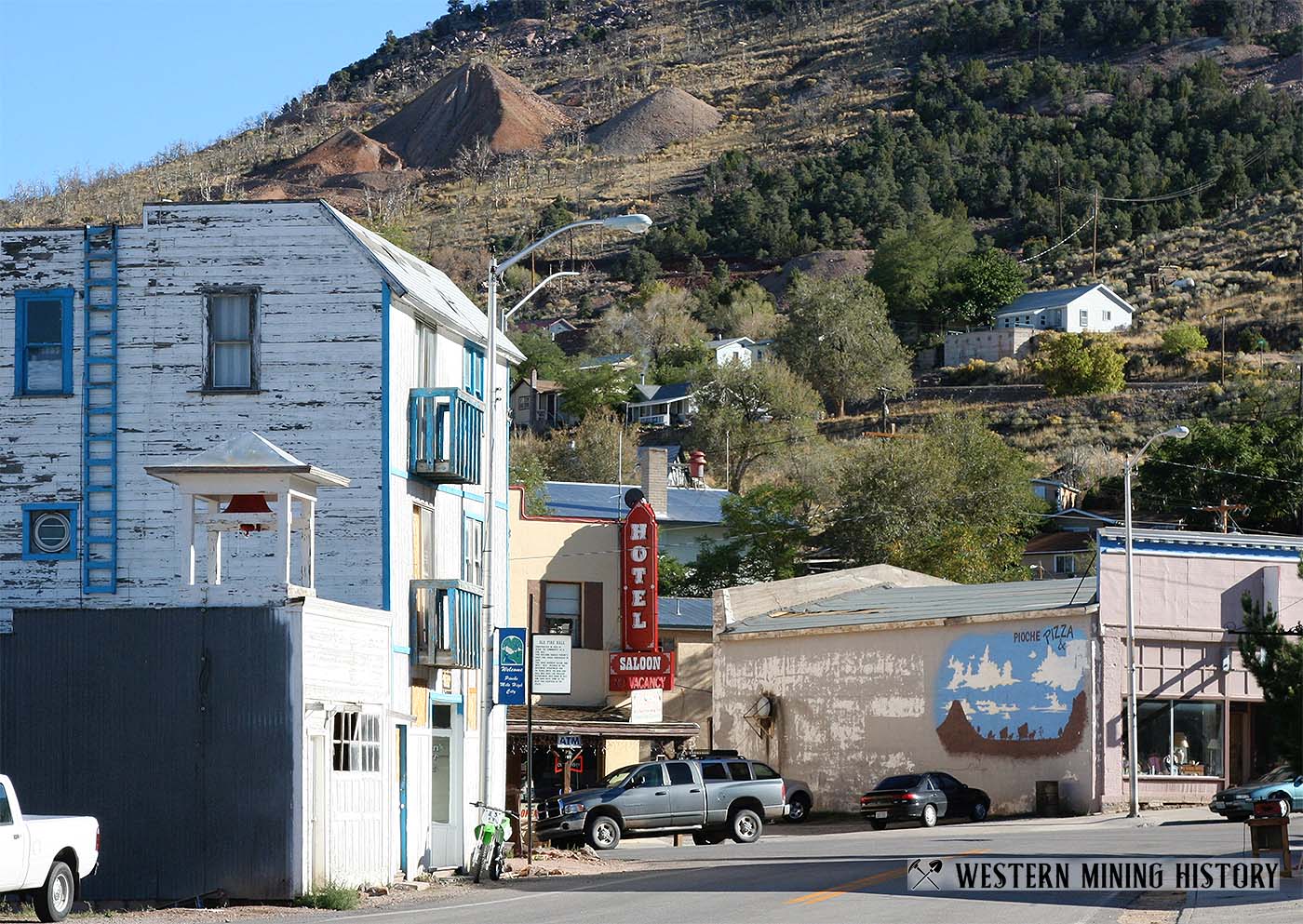
A narrow gauge railroad was operating by June of 1873, but it only extended the ten miles to the ore mills at Bullionville, leaving the district still disconnected from the rest of the state. In 1876 the two large mining operations shuttered their operations, and Pioche’s boom period was over as fast as it started.
There was a revival in 1890, but the district was once again idled by the silver crash of 1893. The dramatic turns in the fortunes of the mines repeatedly derailed plans for a railroad connection to the rest of the state, which in turn further impeded the revival of the Ely district mining industry.
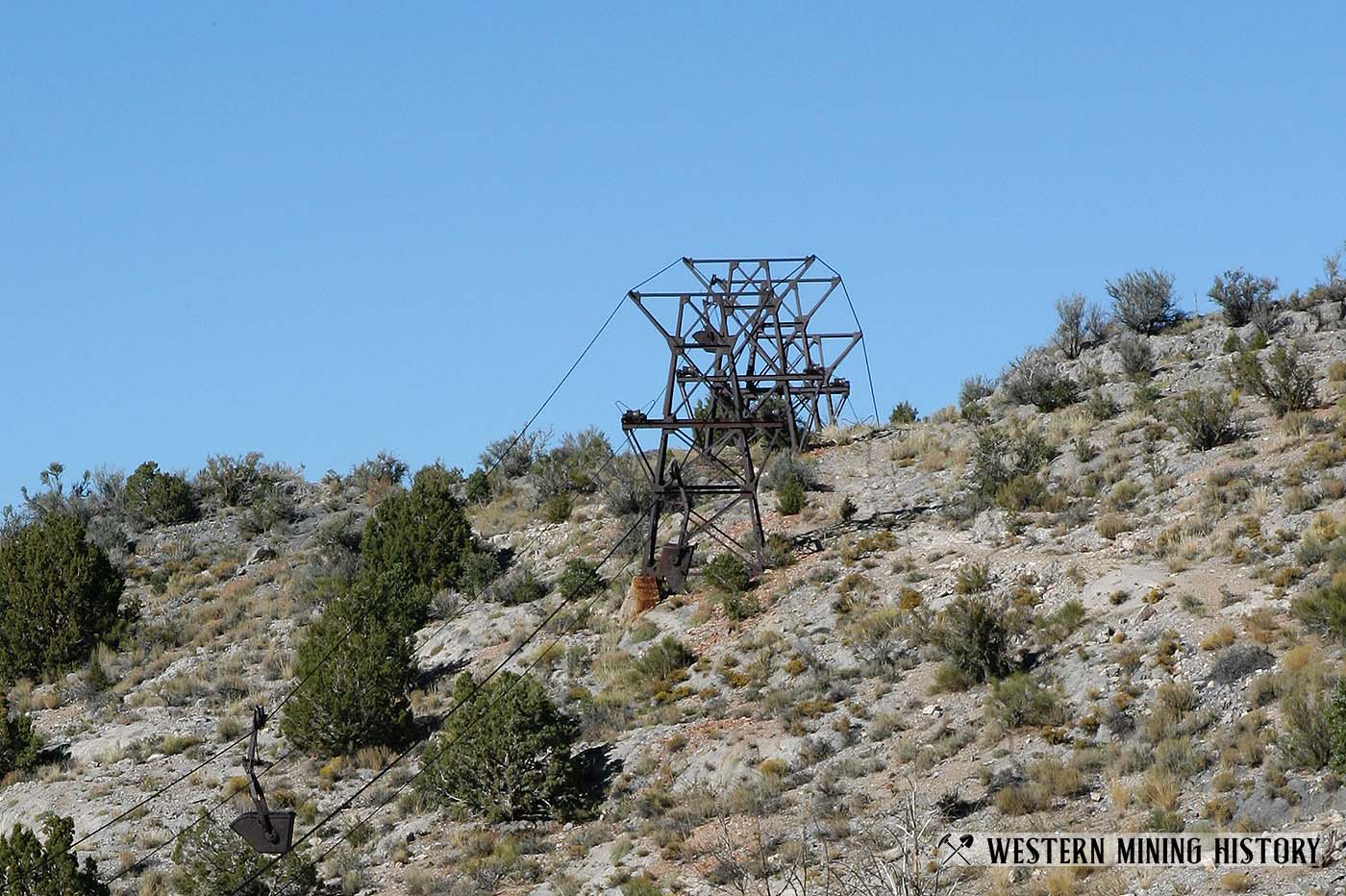
Pioche in the New Century
The area finally got its long overdue rail connection in 1907 which reinvigorated the mining industry. For the first time, Pioche settled into a long period of steady mine production that created a stable local economy. Starting in the late 1930s, lead and zinc mining became important in the area. Ultimately, most mining at Pioche ended by the late 1950s.
The town of Pioche never relived the frenzied boom years of the early 1870s, but it did manage to become a stable community that lasted far longer than other mining towns that died out when the mines inevitably closed. The town’s status as the seat of government for Lincoln County helped it survive the end of mining in the area.
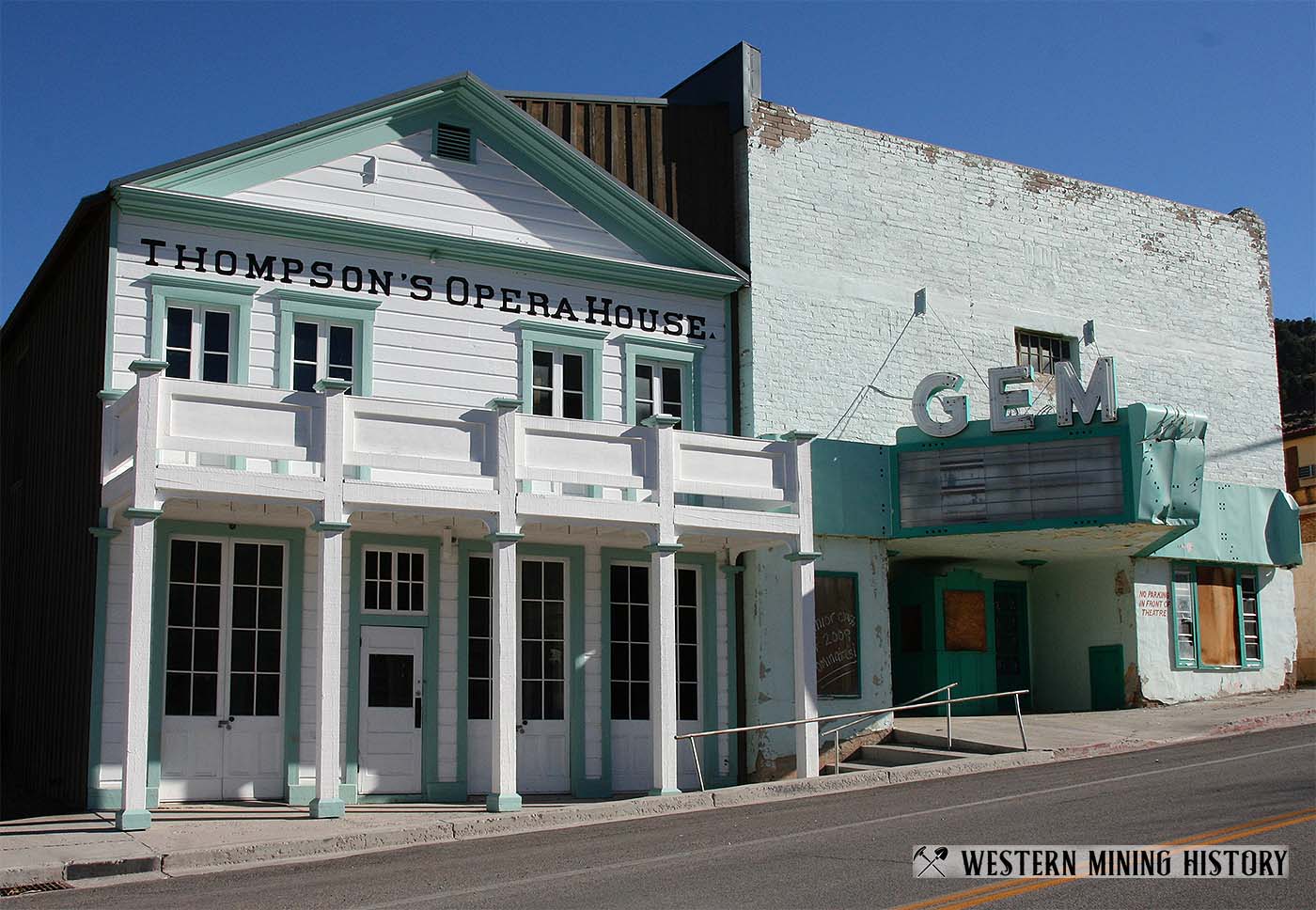
Today, Pioche is an active town with over 900 residents. Many historical structures remain, including the infamous “Million Dollar Courthouse”, the Thompson Opera House, and the ore bin and aerial tram of the Godbe mill.
Historical Newspaper Articles about Pioche
Battle at Pioche
From the Daily Alta California 14 November, 1870.
BATTLE AT PIOCHE, NEVADA - Two Men Killed, Ten Wounded. Sixty Shots Fired - Order Restored.
A dispute between parties for the possession of the Bonner and Creole mines, at Pioche City, culminated in a battle at that place on Wednesday last, in which W. G. Sullivan was killed and ten other men wounded, and two precipitated down the shaft of the Creole, seventy feet. These two escaped with but a few slight bruises.
It appears that the Bonner men drove the workmen from the works Tuesday evening and took possession, holding the mine until five o'clock on Wednesday afternoon, when they were attacked and drawn out by a party of the Creole men.
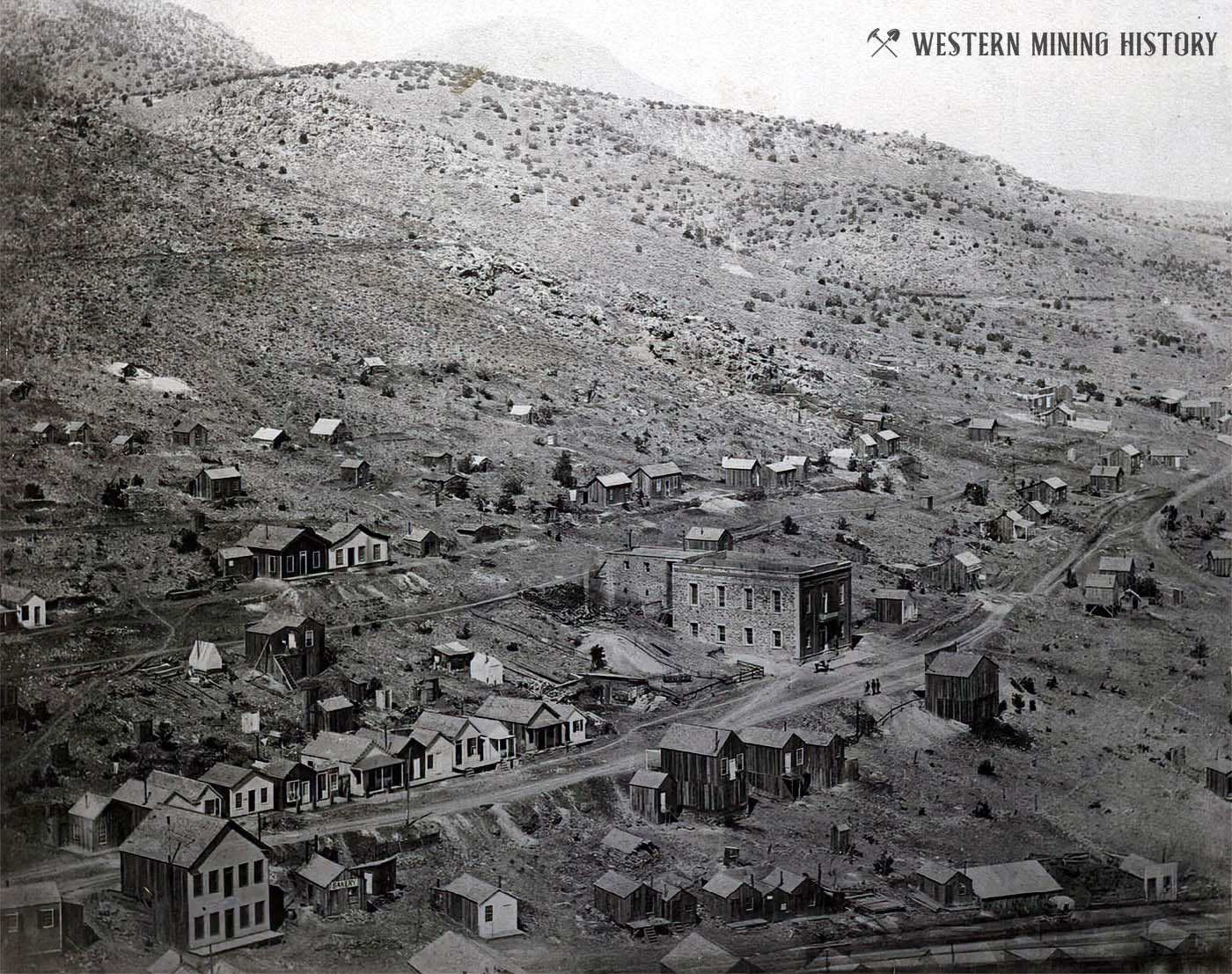
Trouble had been looked for all day, for it was rumored around town that a party were arming to take possession of the mine by force, if necessary. At the time of the attack all trouble was supposed to be over for the day at least, but as soon as the firing commenced the mountain-side was black with people. The crowd was allowed to approach within a hundred yards, when they were halted and forbidden to approach nearer.
None of the wounded are considered in any great danger, but their wounds Are very painful. The following are the names of those wounded: James Finley. Thomas Newland, Jack White, Albert Doliff, John Morgan and Courtney. The names of those who fell down the shaft are not yet ascertained.
Over sixty shots were fired in the skirmish. The parties retaining possession of the Creole mine after the fight were arrested by Sheriff Kane on Wednesday evening. They were brought before Justice Clapp on Thursday morning, and, upon their waiving an examination, were held under $5,000 bail, which was given.
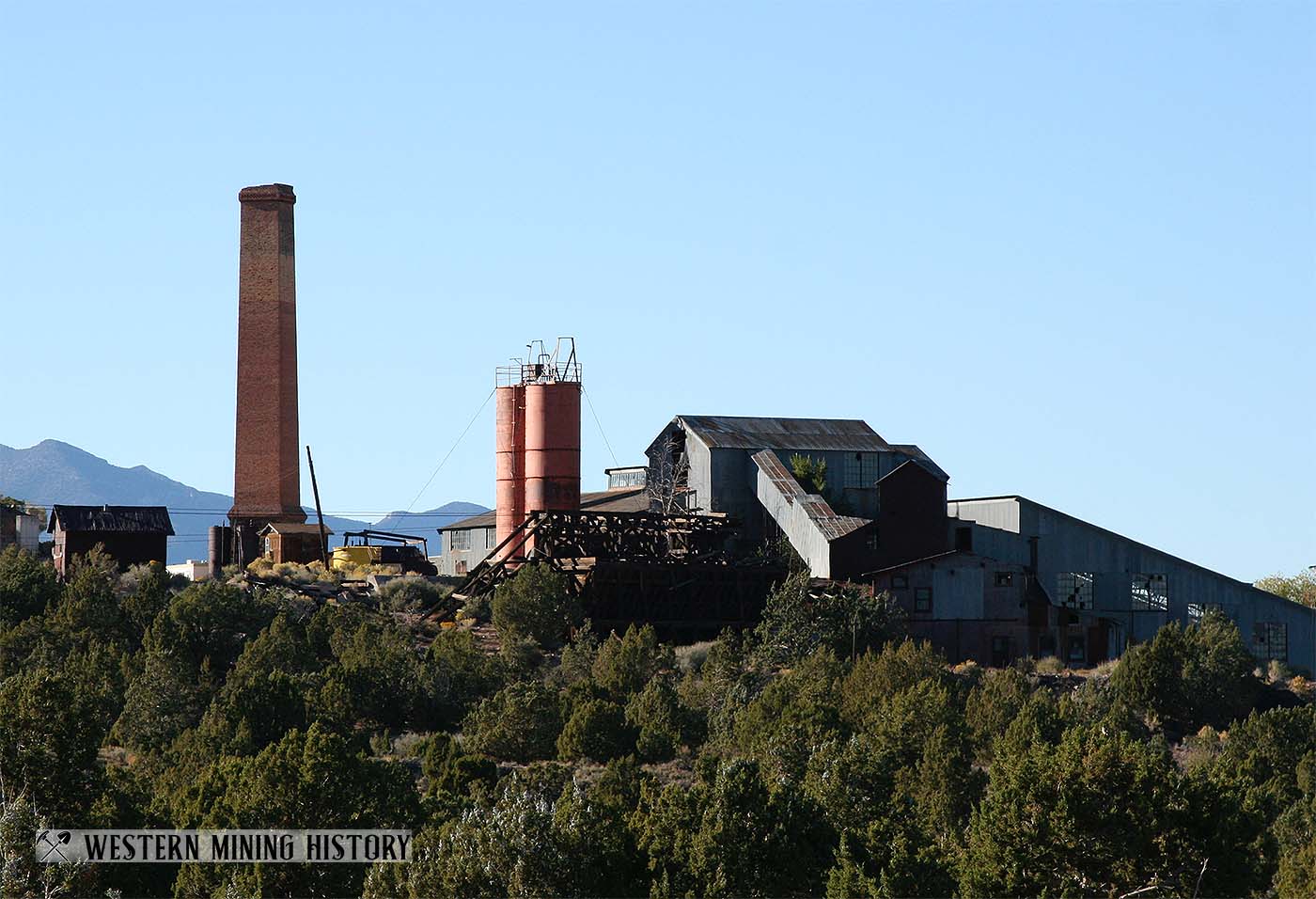
Chinese Man Ships Bones
From the Sacramento Union 18 April, 1913.
Celestial Tries to get Cheap Rate on Thirteen Skeletons at Pioche, Nevada.
a wily Celestial of this place attempted to ship the bones of thirteen Chinese to Los Angeles, from which place he planned to have them sent by steamer to China. The Chinaman, whose name is Ong Chong Lung, took this means as a matter of economy, the rate on notions being much less than it is on corpses, He asked the station agent for the rates on notions and the next day brought the bones to the station in thirteen oblong boxes.
An Investigation was made and the fact that the “notions" were human bones was discovered. Ong Chong Lung was told that he would have to pay the regular rate on the bones and finally did so. It developed that the bones were shipped in accordance with the religious belief of the Celestials.
Nevada Mining Photos
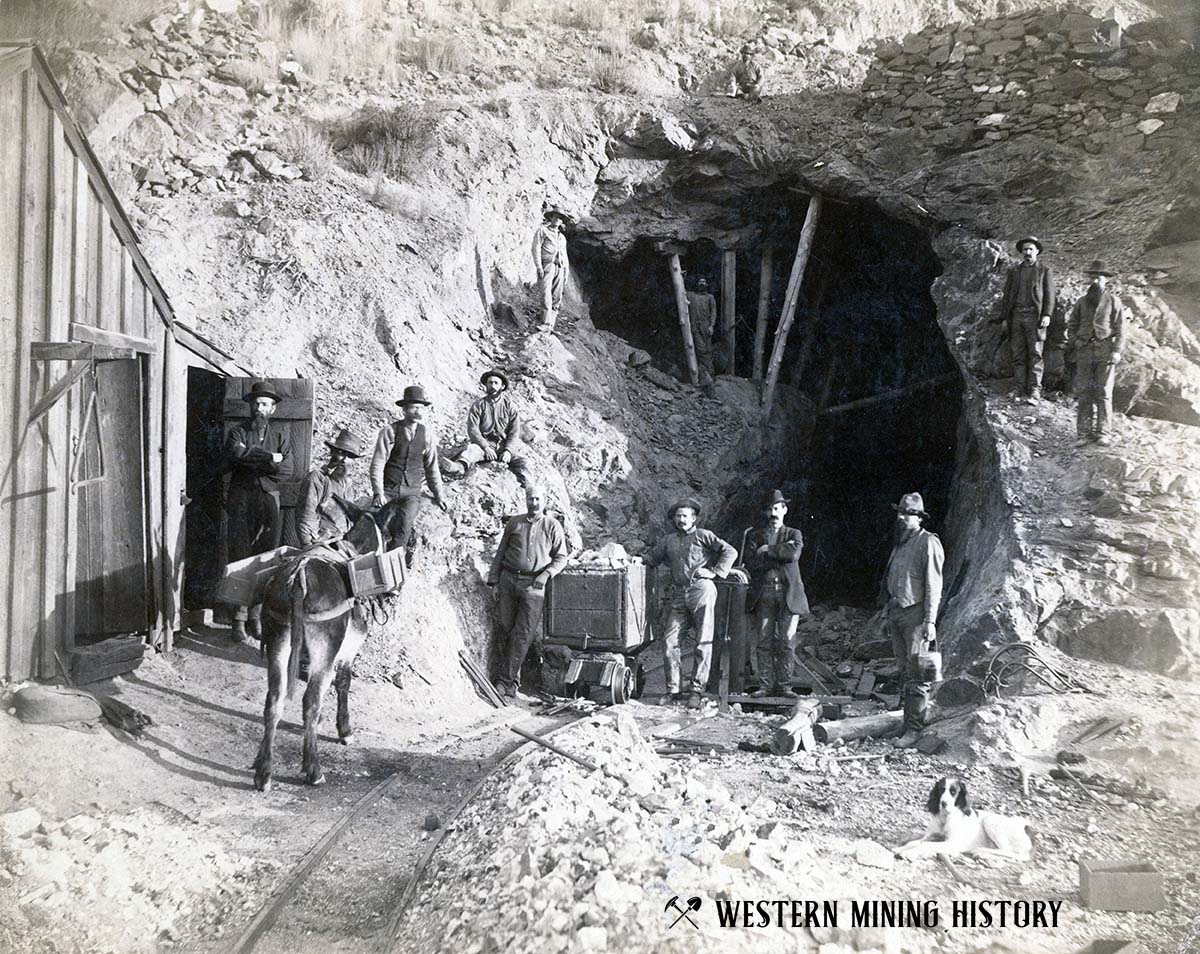
A Collection of Nevada Mining Photos contains numerous examples of Nevada's best historic mining scenes.
Nevada Gold

Nevada has a total of 368 distinct gold districts. Of the of those, just 36 are major producers with production and/or reserves of over 1,000,000 ounces, 49 have production and/or reserves of over 100,000 ounces, with the rest having less than 100,000 ounces. Read more: Gold Districts of Nevada.
